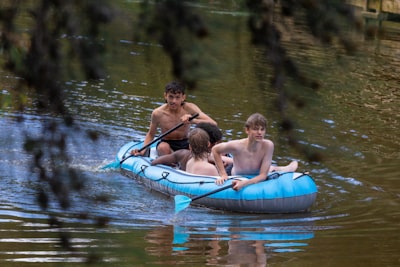Teenage River Drownings in Japan: A Growing Concern and How to Prevent Tragedy
Recent headlines such as "15-Year-Old High School Student Dies in River Drowning Accident" have drawn national attention to the ever-present risks facing teens near rivers and other natural water sources. As temperatures rise and summer activities increase, water safety becomes even more crucial for students, parents, and the community at large.
The Rising Problem of River Drownings Among Japanese Teenagers
In Japan, rivers are an integral part of many communities. While they offer recreational opportunities, they also pose significant dangers—especially to teenagers who may underestimate currents or overestimate their own swimming abilities. According to the National Police Agency, hundreds of water-related incidents are reported annually, and teenagers are particularly vulnerable due to a combination of curiosity, peer pressure, and occasional lack of supervision.
Common Causes of River Drowning Accidents
- Strong currents and underwater hazards
- Lack of swimming skills and knowledge about water safety
- Overconfidence or group pressure leading to risky behaviors
- Unexpected changes in water level or weather conditions
Essential Water Safety Tips for Students and Families
Preventing tragic water accidents requires a holistic approach. Here’s what you can do:
1. Learn and Practice Water Safety Skills
- Attend certified swimming lessons.
- Understand the unique risks posed by rivers versus pools (e.g., currents, depth variability, debris).
2. Supervision and the Buddy System
- Never swim alone. Always have a buddy.
- Young people should always be supervised by a responsible adult.
3. Assess the Environment
- Check for warning signs posted by local authorities.
- Observe the water's speed and clarity; avoid swimming after heavy rain or in unfamiliar areas.
The Role of Schools and Communities in Prevention
Schools and community organizations can organize periodic water safety workshops, invite lifeguard professionals for demonstrations, and develop campaigns during peak swimming seasons. Early education and consistent reminders can save lives.
Technological Innovations: Can They Help?
Advances such as water-resistant personal alarms, wearable flotation devices, and AI-powered river monitoring systems are emerging as potential aids in reducing water-related accidents. Exploring these options could be particularly helpful in communities with frequent river activity.
Frequently Asked Questions (FAQ)
Q: At what age should children learn to swim in Japan? A: Many experts recommend starting basic swimming lessons by age 4-5, with continued practice into the teen years.
Q: Are rivers more dangerous than oceans for teenagers? A: Both environments carry unique risks. Rivers often have unpredictable currents, uneven beds, and can look deceptively calm.
Q: What are the best resources for river safety education? A: Local government websites and organizations like the Japan Water Safety Society offer guides and workshops.
Conclusion
As we reflect on tragic incidents involving high school students and water accidents, it’s important for individuals, schools, and communities to prioritize water safety education and vigilance, especially during seasons of increased river activity. Simple preventive measures, combined with awareness, can make a significant difference in saving lives and preventing heartbreak.
This article was inspired by the headline: '川で水難事故 15歳の高校生死亡'.

Comments
No comments yet. Be the first to comment!